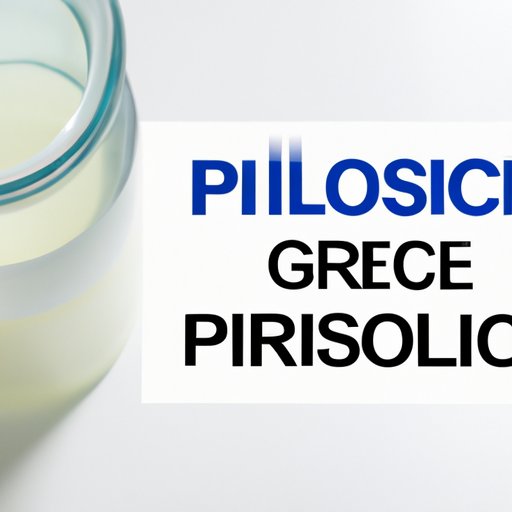
Introduction
Prilosec is a commonly prescribed medication used to treat acid reflux, ulcers, and other digestive issues. While it can be effective in reducing symptoms, taking Prilosec for longer than two weeks can have serious health consequences. In this article, we will explore the dangers of long-term Prilosec use and why the recommended limit is 14 days. We will also provide alternative treatments for acid reflux and tips for safely transitioning off Prilosec.
The dangers of long-term Prilosec use: Understanding the risks and potential side effects
Prilosec is a type of proton pump inhibitor (PPI) that works by reducing the amount of acid produced in the stomach. While it can be effective in reducing symptoms, research has shown that long-term Prilosec use can have serious health consequences.
Potential side effects of long-term Prilosec use include:
- Kidney damage
- Nutrient deficiencies
- Increased risk of infections
Studies have found that taking PPIs such as Prilosec for an extended period of time can increase the risk of kidney disease, kidney failure, and nutrient deficiencies such as magnesium and vitamin B12. In addition, PPIs have been linked to an increased risk of infections such as C. difficile, a dangerous bacterial infection that can be difficult to treat.
Why 14 days is the limit for Prilosec: Exploring the science behind the medication
The FDA recommends that Prilosec should not be taken for longer than 14 days without the recommendation of a doctor. The reason for this is that prolonged use of PPIs can lead to rebound acid production and increased symptoms, potentially causing people to take higher doses of Prilosec or take it for longer periods of time than recommended.
Studies have found that the mechanism of action of PPIs can cause the body to compensate for the decrease in acid production by increasing the number of acid-producing cells in the stomach lining. This can lead to increased acid reflux symptoms, creating a cycle of dependence on the medication.
Alternatives to Prilosec for long-term acid reflux treatment
There are alternative treatments for acid reflux that can be effective in reducing symptoms and addressing the underlying causes. These include:
- Dietary changes: Avoiding trigger foods such as highly acidic or spicy foods, as well as alcohol and caffeine.
- Weight loss: Losing excess weight can help reduce the pressure on the stomach, reducing the likelihood of acid reflux symptoms.
- Natural remedies: Using natural supplements such as probiotics, digestive enzymes, and ginger can help promote digestive health and reduce acid reflux symptoms.
It’s important to note that these alternative treatments may not work for everyone and it’s best to consult with a healthcare provider before making any significant changes to your treatment plan.
The impact of Prilosec on digestive health and gut bacteria
Gut health is essential for overall health, and PPIs have been shown to disrupt the delicate balance of gut bacteria, potentially increasing the risk of infections. It’s important for anyone taking Prilosec to take steps to maintain gut health, such as:
- Eating a diet rich in prebiotic and probiotic foods, such as fruits, vegetables, and fermented foods.
- Taking a high-quality probiotic supplement.
- Using digestive enzymes to aid in digestion and nutrient absorption.
It’s also important to discuss any concerns about gut health and the risk of infections with your healthcare provider.
The connection between Prilosec use and bone fractures: What you need to know
Research has shown that long-term PPI use, including Prilosec, is associated with an increased risk of bone fractures. This is believed to be due to the medication’s impact on calcium absorption and bone density. To reduce the risk of bone fractures, it’s important to:
- Take calcium and vitamin D supplements
- Engage in weight-bearing exercise
- Discuss any concerns with your healthcare provider
How to safely wean off Prilosec after the 14-day limit: Tips and strategies for minimizing withdrawal symptoms
It’s important to wean off Prilosec gradually to minimize potential withdrawal symptoms and allow the body to adjust to the decrease in acid production. Strategies for safely transitioning off Prilosec include:
- Gradually reducing the dose of Prilosec over several weeks
- Using over-the-counter antacids as needed
- Implementing lifestyle changes such as dietary changes and weight loss
It’s important to discuss any plans to stop taking Prilosec with your healthcare provider to ensure a safe and effective transition to alternative treatments.
Conclusion
Prilosec can be an effective treatment for acid reflux and other digestive issues, but it’s important to understand the risks and potential side effects of long-term use. Alternatives to Prilosec include dietary changes, weight loss, and natural remedies. It’s also important to take steps to maintain gut health and reduce the risk of bone fractures, and to consult with a healthcare provider before making any significant changes to your treatment plan.




